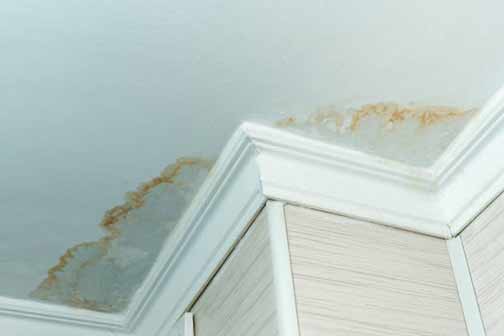
When buying a house, it is crucial to conduct thorough home inspections to avoid unexpected expenses in the future. Among the various elements to inspect, the plumbing system deserves special attention. Plumbing issues, if left unnoticed, can lead to significant damage and costly repairs. A well maintained plumbing system ensures the proper functioning of water supply, drainage, and heating systems, which are essential for a comfortable living environment. Therefore, identifying plumbing red flags can save you from potential long term problems and help you make an informed decision during the home buying process.
Common Plumbing Issues to Look Out For
During your home inspection, be on the lookout for common plumbing issues that could indicate potential problems. These issues include:
- Leaking faucets and pipes
- Slow drains and clogs
- Running toilets
- Low water pressure
- Mold and mildew growth
- Discolored water
- Strange noises from the plumbing system
Identifying these issues early on can help you address them before they worsen and lead to more significant problems.
Evaluating the Water Pressure and Flow
Water pressure and flow are critical aspects of a functional plumbing system. Low water pressure can be a sign of underlying issues, such as clogged pipes, leaks, or problems with the water service line. During your inspection, turn on multiple faucets simultaneously and check the water pressure. If you notice a significant drop in pressure, it could indicate a problem that needs further investigation. Additionally, observe the water flow to ensure it is steady and consistent without any interruptions or fluctuations.
Examining the Age and Condition of Pipes
The age and condition of the pipes in a house play a significant role in the overall health of the plumbing system. Older pipes made of materials like galvanized steel or cast iron are more prone to corrosion and leaks. Inspect the visible pipes for signs of rust, corrosion, or damage. Additionally, inquire about the age of the plumbing system and whether any recent updates or replacements have been made. If the pipes are old and deteriorating, you may need to budget for future replacements to avoid potential plumbing failures.

Detecting Leaks and Water Damage
Leaks and water damage are major red flags that can indicate serious plumbing issues. Look for signs of water stains, dampness, or mold on walls, ceilings, and floors. Check under sinks, around toilets, and near water using appliances for any signs of moisture. A musty odor can also be a sign of hidden leaks or water damage. Addressing leaks promptly can prevent further damage to the property and avoid costly repairs in the future.
Checking the Functionality of Fixtures and Appliances
The functionality of plumbing fixtures and appliances is essential for a well-operating plumbing system. Test all faucets, showers, and toilets to ensure they are working correctly and efficiently. Pay attention to any unusual sounds, drips, or slow drainage. Additionally, inspect water using appliances such as dishwashers, washing machines, and refrigerators with water dispensers to ensure they are in good condition and free of leaks. Properly functioning fixtures and appliances contribute to the overall efficiency and reliability of the plumbing system.
Inspecting the Water Heater
The water heater is a vital component of the home’s plumbing system, providing hot water for daily use. During the inspection, check the age and condition of the water heater. Look for signs of corrosion, rust, or leaks around the unit. Test the hot water temperature and observe how quickly the water heats up. Inquire about the maintenance history of the tank and whether any repairs or replacements to the water heater have been made. A well maintained and efficiently operating water heater is essential for the overall functionality of the plumbing system.
Understanding the Sewer and Drainage Systems
The sewer and drainage systems are critical for the proper disposal of wastewater and preventing sewage backups. During your inspection, check for any signs of slow drains, gurgling sounds, or foul odors coming from the drains. These could be indications of clogs or issues with the sewer line. Additionally, inspect the outdoor drainage systems, including gutters and downspouts, to ensure they are effectively directing water away from the house. Properly functioning sewer and drainage systems are essential for maintaining a healthy and safe living environment.
The Cost of Plumbing Repair and Maintenance
Understanding the potential costs of plumbing repair and maintenance is crucial when buying a house. Depending on the severity of the issues, plumbing repairs can range from minor fixes to major overhauls. Common repairs such as fixing leaks, replacing faucets, or unclogging drains can cost a few hundred dollars, while more extensive work like repiping or sewer line replacement can run into thousands of dollars. Being aware of these potential costs can help you negotiate the purchase price or request repairs before finalizing the deal.
Hiring a Professional Plumbing Inspector
While a general home inspection covers the basics, hiring a professional plumbing inspector can provide a more detailed and comprehensive assessment of the plumbing system. A plumbing inspector has specialized knowledge and tools to identify hidden issues that may not be apparent during a standard inspection. They can perform tests such as camera inspections of the sewer line and pressure tests to detect leaks. Investing in a professional plumbing inspection can give you peace of mind and ensure that you are making a well-informed decision when buying a house.
In conclusion, identifying plumbing red flags during the home buying process is essential to safeguard against potential long-term problems and unexpected expenses. By paying close attention to the plumbing system and addressing any issues promptly, you can ensure a safe, comfortable, and well-maintained living environment in your new home.

